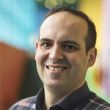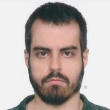In the conversion of wind power, the rotor is the first point of energy transformation, transforming the kinetic energy of the wind into torque and rotation. Rotor technology sets a limit of the energy converted and the loading required to convert this energy. The load cycles are design drivers, influencing the mass and operation of the rotor, and therefore the entire turbine. In addition to extracting kinetic energy from the flow, the rotor creates a pressure field that generates the wake and leads to noise generation. Rotor design optimisation must therefore account for power and load optimisation, constrained by the full lifecycle, fatigue life and noise, among other boundary conditions. This session focus on innovations in both rotor design methodologies and components.
You attended this session?
Learning objectives
- Understand the effect of geometric non-linearities in the fatigue life of the blade;
- Evaluate the possible impact of flexible certification guidelines in rotor design optimisation;
- Analyse the application of trailing edge serrations as a noise reduction device;
- Evaluate the potential of active flap control for both alleviation and power optimisation;
- Evaluate the impact of integrating the turbine lifecycle in the design optimisation of rotors.
_-_Photo_2016.jpg)

Presenter

Co-authors:
Vasileios Pettas (1) F Thanasis Barlas (1) Drew Patrick Gertz (1) Helge Aagaard Madsen (1)
(1) DTU Wind Energy, Roskilde, Denmark
Presenter's biography
Biographies are supplied directly by presenters at WindEurope Summit 2016 and are published here uneditedVasilis Pettas is an MSc in Wind Energy from DTU graduated in 2016. The educational background includes a diploma in Mechanical Engineering from NTUA (2012). Has also worked as intern in Siemens Wind Power SA Loads and Validation group (2015-2016). His research subject is aeroelastic design and modelling close to the Aeroelastic Design group of Riso-DTU.







Follow EWEA on: